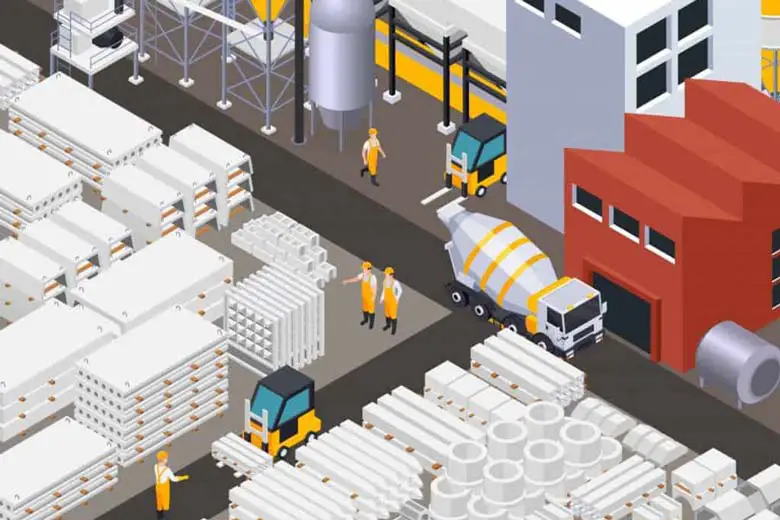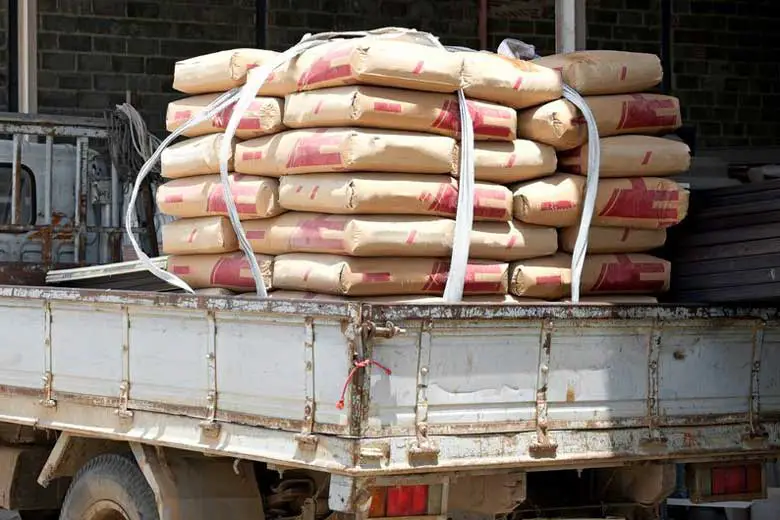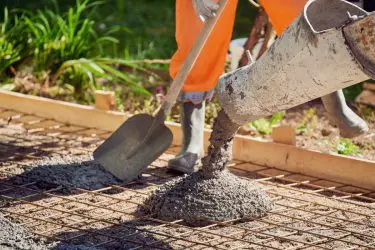One of the hardest parts of planning a concrete project is figuring out the amount of concrete that you need. Concrete is expensive, so it would be a big detriment to purchase too much. At the same time, it would be an absolute disaster to not buy enough. Here’s a chart guide to help you with some common amounts.
| Volume | Weight (Pounds) | Weight (Kilograms) |
| 1 Cubic Foot | 144lbs | 66kg |
| 1 Cubic Yard | 4,056lbs | 1840kg |
| 1 Cubic Meter | 5,306lbs | 2406kg |
The first thing you should notice looking at this chart is that the numbers are very big. You may be surprised at just how much concrete you need for your project.
Well, before you panic you should take a look at the units of measurement we’re using. ‘cubic’ measurements measure volumes, and how much concrete you need will certainly depend on the thickness you plan to pour to.

Table of Contents
How To Calculate Volume
For you to know how much concrete you need, you’ll need to calculate the volume of your space. Fortunately, the math is fairly simple for this. You’ll need the width, the length, and the depth of the space you plan to fill.
Use the length of any two adjacent sides of a square/rectangular room for the width and length. Now you need to find the depth.
How deep you need your concrete to be will depend on what you plan to use it for. If you plan to make a driveway that will be holding cars or heavy walls, you’ll need 6 to 9 inches of concrete. If you’re just pouring a new walkway or a basement floor, you’ll probably only need 2.5 to 4 inches.
All of this will depend on how much weight you need your concrete to hold up.
A slab that needs to hold up something like a car or a truck will need a lot more concrete than a slab that only needs to hold up, at most, a few hundred pounds or so of people.
Here are a few articles we’ve written about how to determine the thickness of concrete that you need for different purposes. Here’s one about sidewalks, one about garages, and one about sheds. Give them a look.
Now that you know all of your dimensions, it’s time for math. Convert them all from yards or feet to inches. This will make the math a lot easier since your smallest unit is going to be inches anyway.
Math Time

Now multiply your height, width, and length together. The formula looks like this:
h*w*l=V (V is volume)
So if your pour is going to be 1 yard by 1 yard, then we’ll convert that into inches (36) and plug them in like this:
h*36*36=V
And if you plan to pour about 3 inches deep, the equation will look like this:
3*36*36=V
The final number we’ll end up with will be in cubic inches. For this example, the math will end up looking like this:
3*36*36=3,888 cubic inches
We’ll want to convert this number back into a more convenient measurement like cubic feet or cubic yards. The conversion looks like this:
1 Cubic Foot=1,728 cubic inches
1 Cubic Yard=46,656 cubic inches
Our number of cubic inches is closer to 1 Cubic foot, so that’s what I’ll convert it to.
3,888/1,726=2.3 cubic feet
Also Read: How Many Bags of Concrete Equal a Yard?
I always like to round up to a whole number when I get decimals. Most places will refund you for excess concrete, so in my opinion, it’s always better to overbuy than to underbuy. It also makes the next step a lot easier.
That makes our final number about 3 cubic feet.
Now that you know the volume, you can use the chart we had earlier to figure out how many pounds of concrete you’ll need to fill that space.
Looking there, we can see that 1 Cubic foot is about 144lbs of concrete, so 3 cubic feet turns out to be about 432lbs of concrete.
We can now figure out how many bags of concrete we need to fill this space by looking at common amounts sold by big box hardware stores like Home Depot.
In my experience, they tend to sell 50lb, 60lb, and 80lb bags. We can divide 432lbs by 80lbs to figure out how many 80lb bags of concrete you need.
432/80=5.4
We’ll round that up and it comes out to 6 bags. All around, not bad!
Why do we round up to 6 bags? Not only do they not sell half-bags in most places, but it also just makes things a lot easier if you have a little bit more concrete than you actually need.
Some important math facts you’ll want to remember:
- If you end up converting cubic feet to cubic yards, the conversion rate isn’t 3 cubic feet per cubic yard, it’s 27 cubic feet per cubic yard.
- If you’re living in a place where they don’t use your native measuring system, remember that 1 cubic meter=35.4 cubic feet.
Getting Your Concrete Home

For most household projects, you probably won’t need tons of concrete. However, if you do plan on getting a lot of work done, you might want to think about how you intend to get that concrete to your home.
The easiest way for small projects is just to bring it back in your car. However, remember that 1 Cubic yard of concrete is over two tons. It may not be feasible to cart that back home from the hardware store.
For large projects that need a cubic yard or more of concrete, I always suggest that you order ready-mix concrete from a local provider.
For large amounts of concrete like that, it usually ends up being cheaper than doing everything on your own. If you’ve got a bit of experience taking care of newly poured concrete you probably won’t even need to hire contractors.
Also read: How Many Bags of Concrete Are on a Typical Pallet?
Pouring Your Concrete
Depending on the amount of concrete that you use, you’ll also want to rent a concrete mixer. If you’re pouring less than a cubic yard but more than a few cubic feet, a concrete mixer is practically a necessity.
You can rent them from most box stores. The smallest time increment you can get them in is about four hours, which should be enough for most projects.
Also Read: How to Mix Large Quantities of Concrete (On the cheap!)



